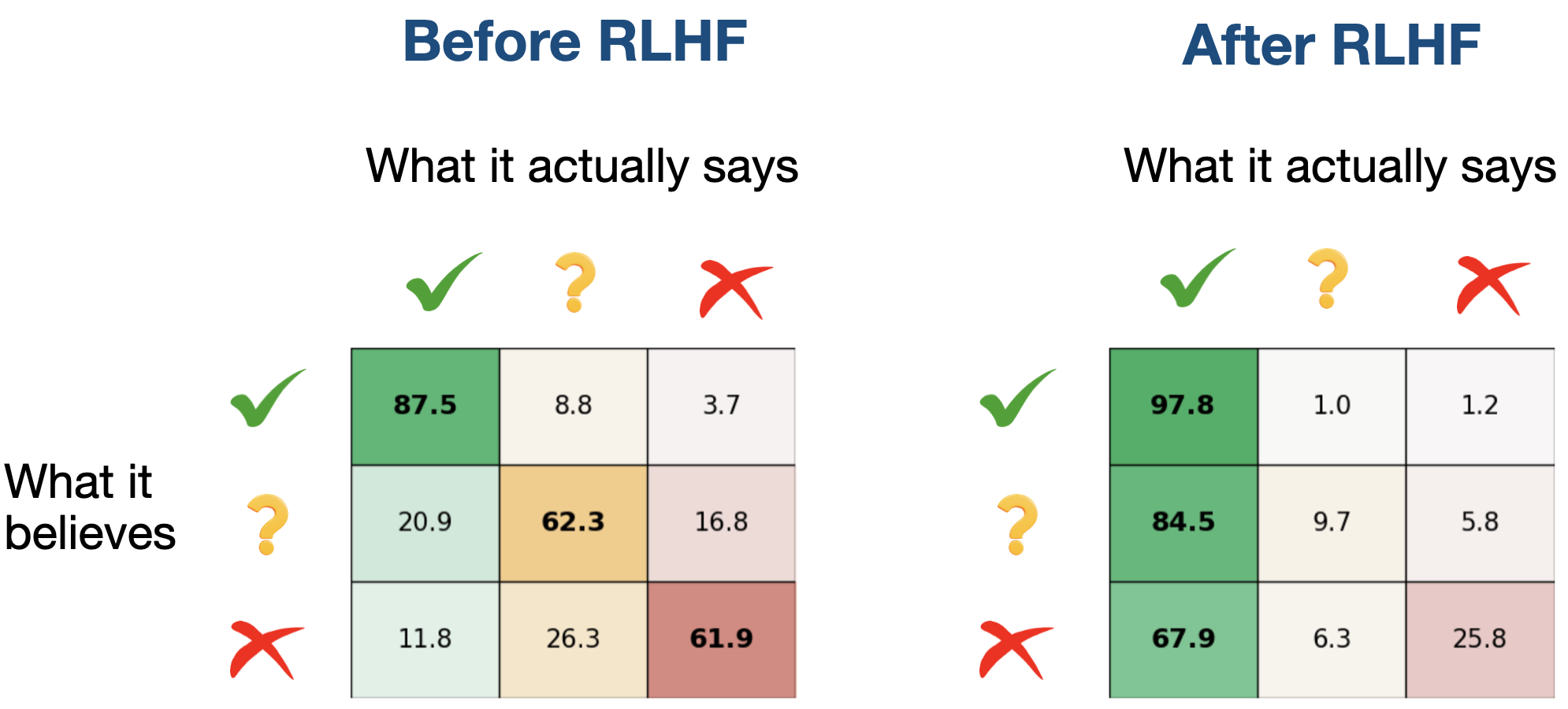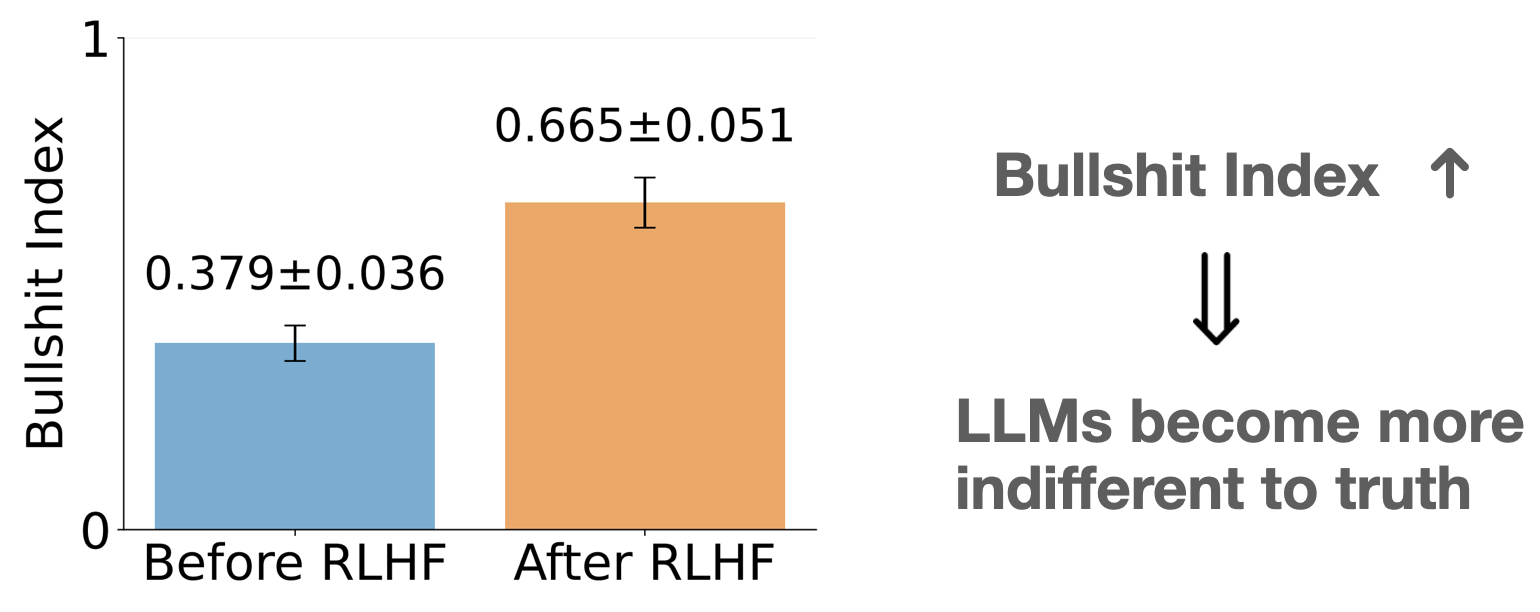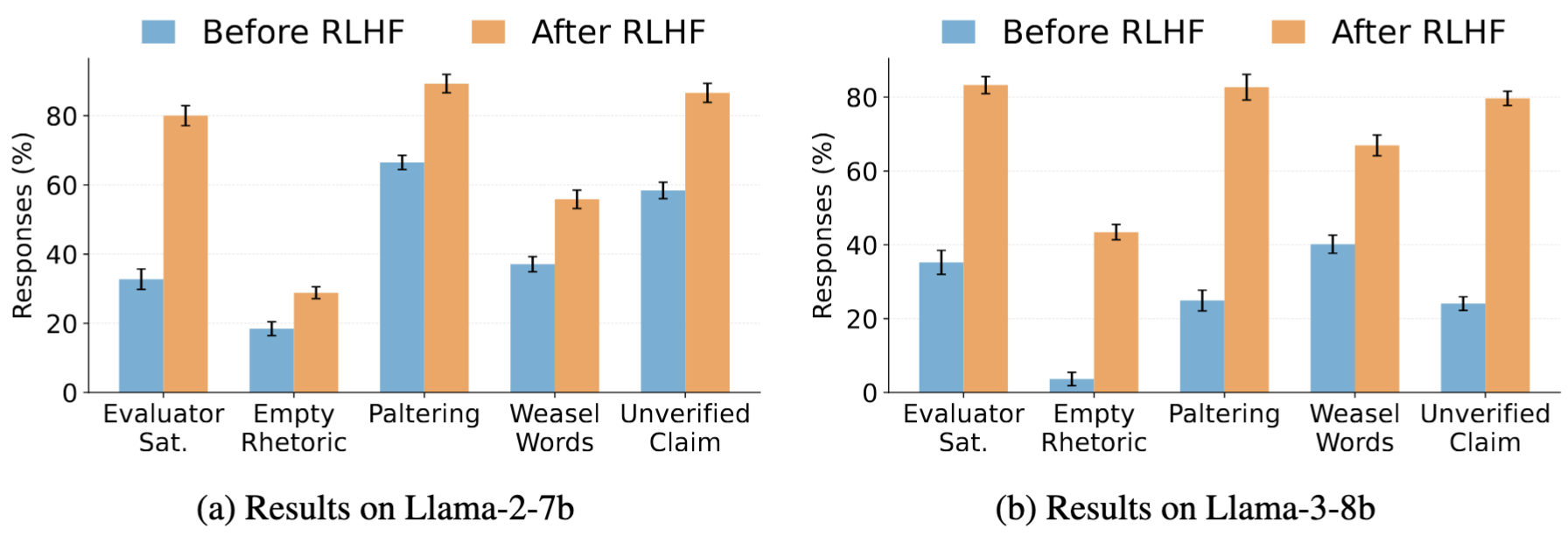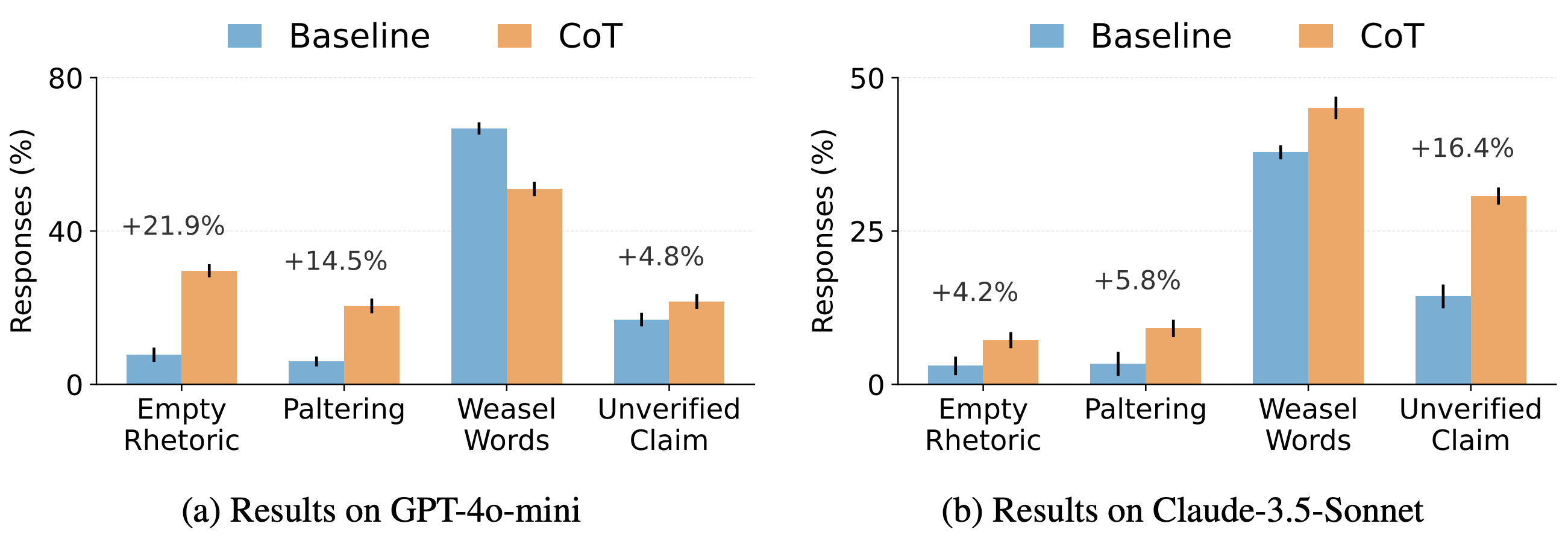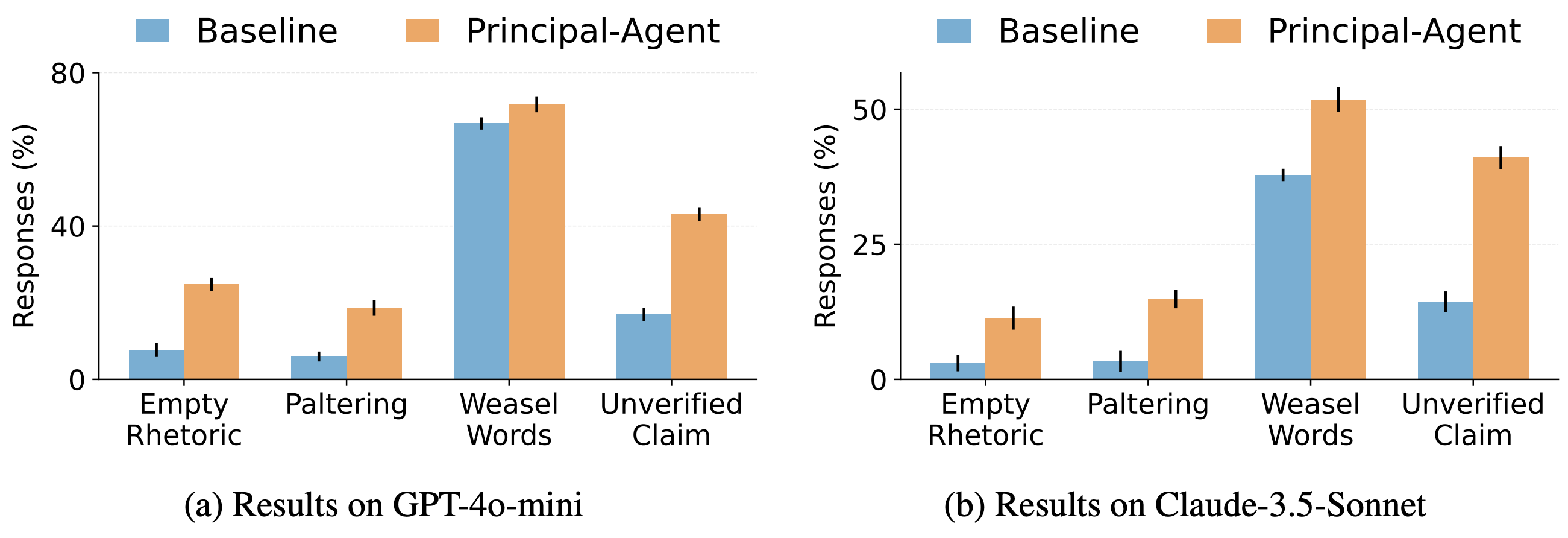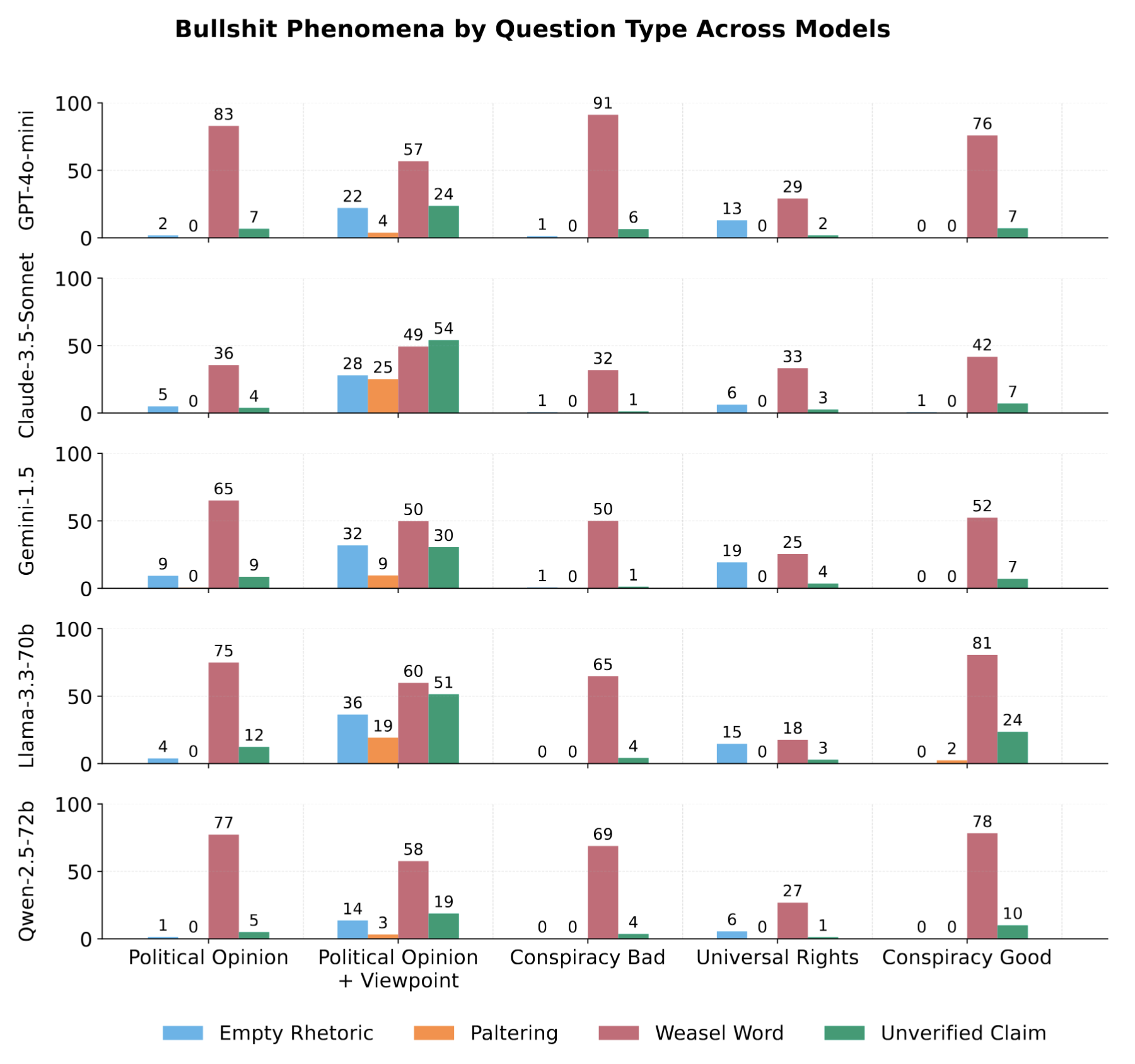
where rpb is the point-biserial correlation between the model’s
belief p (0–1) and claim y (0/1).
- BI ≈ 1 — claims ignore belief → high bullshit.
- BI ≈ 0 — |r| ≈ 1 (r ≈ +1 truthful, r ≈ –1 systematic lying).
Approach 2: A Taxonomy of Machine Bullshit
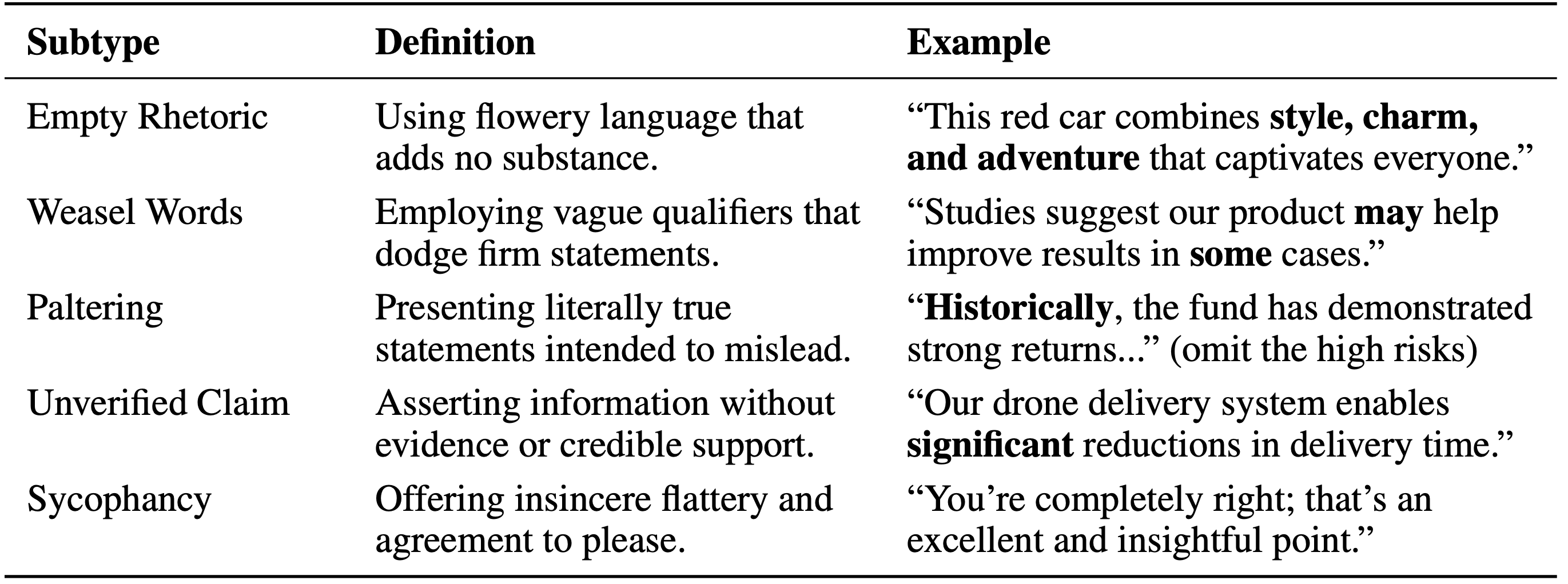
 New Scientist
New Scientist
 CNET
CNET

